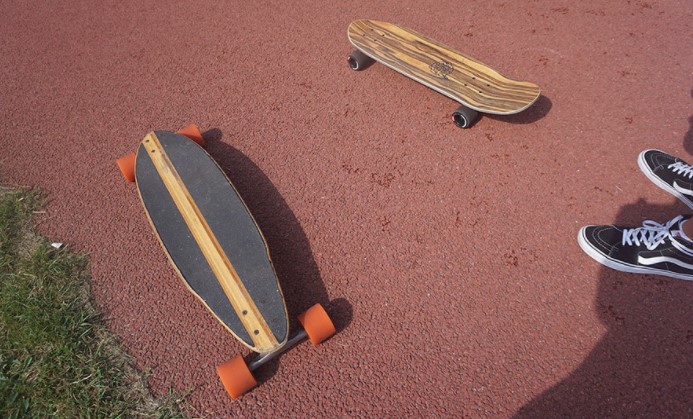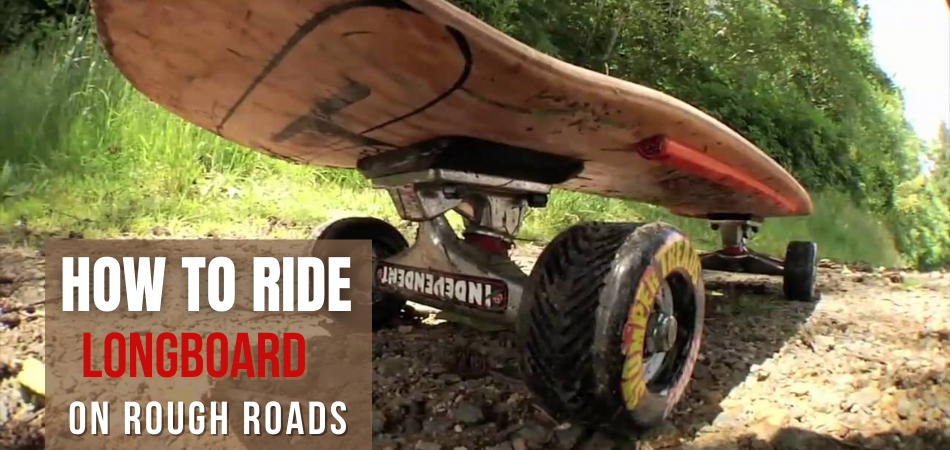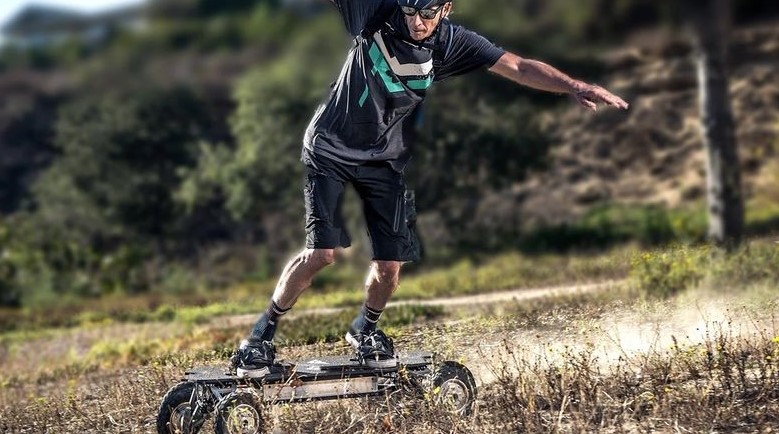Although longboarding is fun, and eco-friendly transportation, it can be tiresome and dangerous while riding on rough roads. Well, unless you know how to conquer the skill it requires.
Since rough roads are covered in gravel, sharp objects, and every possible obstacle, longboarding on it needs special skill. Obstacles from gnarly cracks to heavy bumps on streets put significant impact on the longboard.
So, to make the ride efficient and fun, you must know How To Ride A longboard On Rough Roads. And that’s what we’re discussing today, including some safety tips to help you out. Here you go:
Can You Longboard On Any Surface?
You may not ride skateboards without skate parks, but longboards go almost anywhere, including rough surfaces. Longboards have softer and larger wheels, making them suitable for all terrains. With longer decks than conventional skateboards, longboards also offer versatile riding styles.

However, for a comfortable ride on any surface including bumpy terrains, you need good-quality longboard wheels with efficient grip and traction. So you can enjoy a smooth and fast ride over rough or smooth concrete, pebbles, cracks, and any uneven roads.
How To Ride A Longboard On Rough Roads?
When it’s about street skating or riding a longboard on city streets, you’ll not find smooth roads every time. So if you’re wondering how to ride a longboard on the roughest roads, follow the techniques below. Here we’ll show a couple of ways to ride longboard on rough roads:

1. Avoid The Smaller Cracks
Riding a longboard over cracks like a few tiny millimeters or under half an inch is quite easy. Here we’ve shown the first technique to go through over any baby little cracks, have a look-
- Start riding your longboard by putting your weight in the middle of the board.
- When you see any tiny crack, try to lift your weight a little bit up while going over it.
- You don’t need to jump off the board. It will be like a kind of hop-up while passing any minor cracks.
This simple technique will make your longboard riding effortless while you’ll ride it over rough roads. It will prevent falls and offer you a balanced ride.
2. Getting Over The Medium Bumps/Cracks
You can follow the second technique if the crack is bigger than half an inch or many small cracks. This one will help you to go through over a bit of bit bigger crack or bump and ensure a comfy ride, have a look-
- Keep your non-dimensional foot in the middle of the board, another one behind it.
- When the crack is coming up, put your dimensional foot down and push it on the ground.
- This will be like one foot on the board and the other on the ground for a push.
- This one-foot pushing system will be like popping over the crack since most of your weight will be on the ground.
The core point of the second technique is giving the longboard enough room to pop up over the bigger cracks or speed bump by itself. It’ll prevent the board from stopping you and, at the same time, keep your flow going.
3. Conquer Any Rough Road With Pebbles Or Cracks
The third technique is quite different, and this technique is not for beginners. If you know how to perform the Ollie, then the third technique will be heaven for you. Use the third technique when you see any pebbles or cracks with over two inches. Here are the steps you need to follow-
- Before starting riding, adjust your weight toward the back of the board. This will lift the weight up from the front wheels.
- When you’re rolling over a bigger crank, lift just a little bit and push through it.
- Lift the weight from the front wheels and shift it to the backside, and you can easily pass any crack.
It’s a great technique to ride a longboard on any type of rough road. When you apply the third method, it’ll be like popping over any stoppable rough stuff.
Additional Safety Tips While Riding A Longboard On Rough Roads
Once you know how to ride a longboard on rough roads, the next thing you need to do is consider safety tips. You must keep in mind many safety precautions before starting riding a longboard on bumpy roads. Here are some of the reliable safety tips that can keep you safe from consequences-

- Select the perfect longboard among many types of them based on your riding style.
- Wear protective gear like- helmet, knee pads, elbow protection besides taking lessons.
- Make sure your longboard is in good condition so that it can endure sharp edges and jagged rocks.
- Use a pair of wheels that has a fast rebound function.
- Always wear appropriate and durable skateboarding shoes.
- Learn taking a foot brake and when and how to stop.
- Last but not least, maintain lane signs and traffic signals.
- Always use quality rough road wheels to prevent any impact, rubber wheels can be a safe choice.
Conclusion
If you ride longboards and love adventure, finding perfectly smooth roads exist only in utopia. Learning how to ride a longboard on rough roads can give you the adrenaline rush by cruising over obstacles, cracks, and bumps.
The tips and tricks we’ve discussed above can help you master off-road longboarding.
Now, let’s recap the thing real quick: Get a longboard with off-road wheels, and put on safety gears. Once you have both on, following the techniques and practice are what you need.